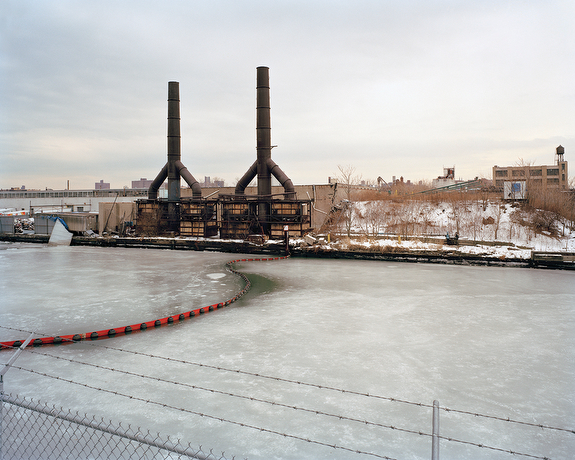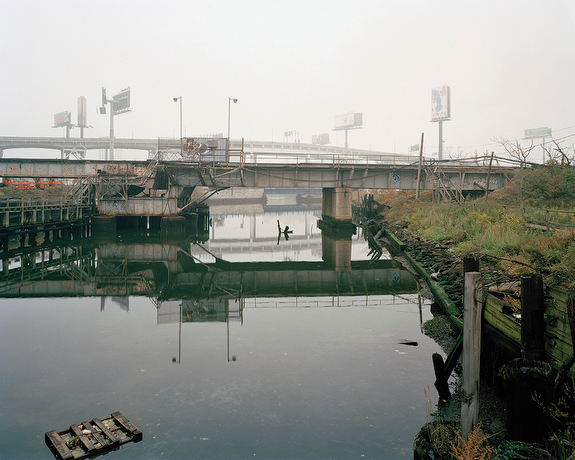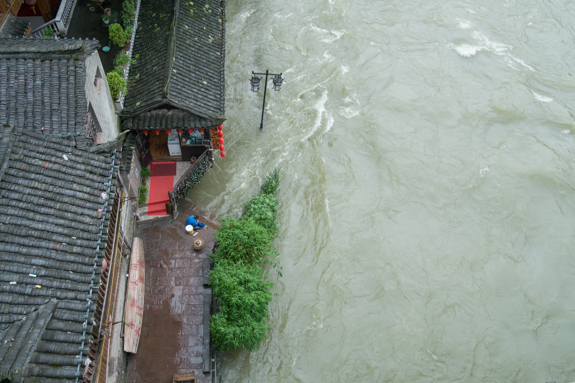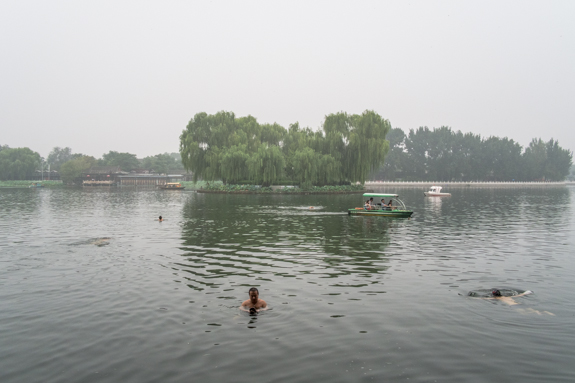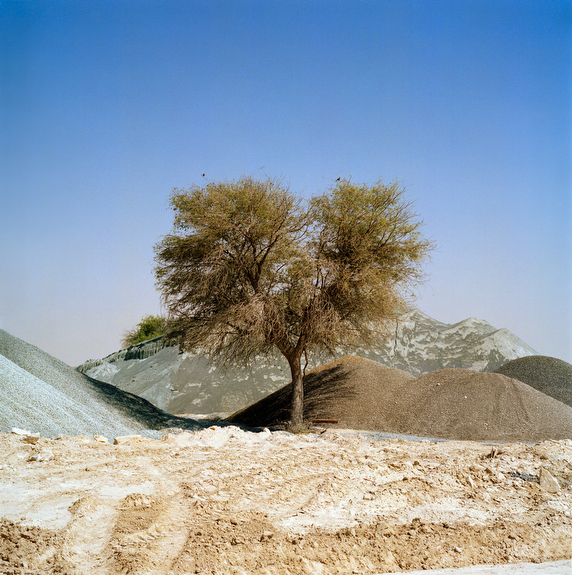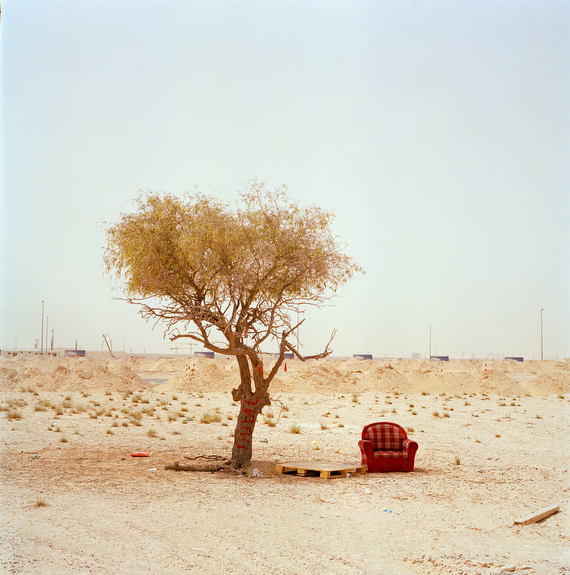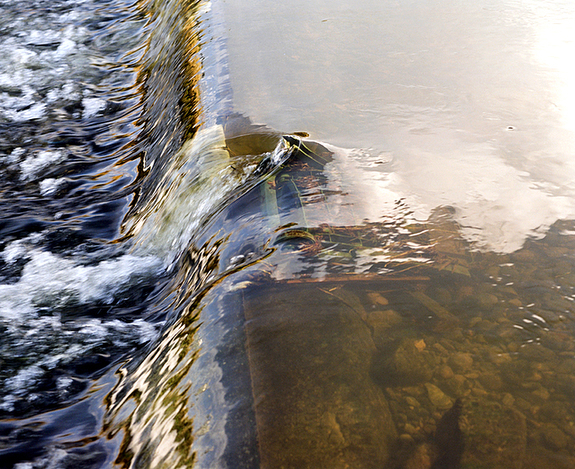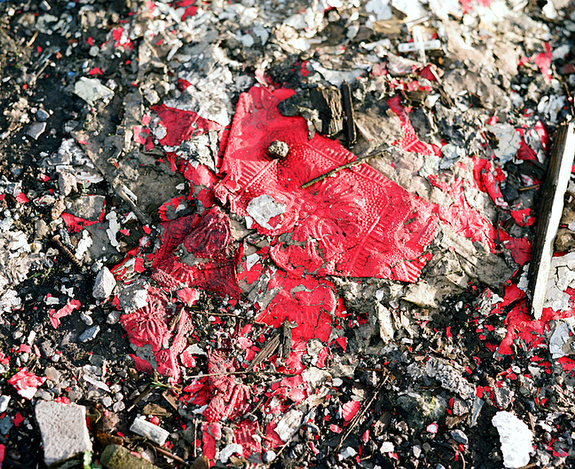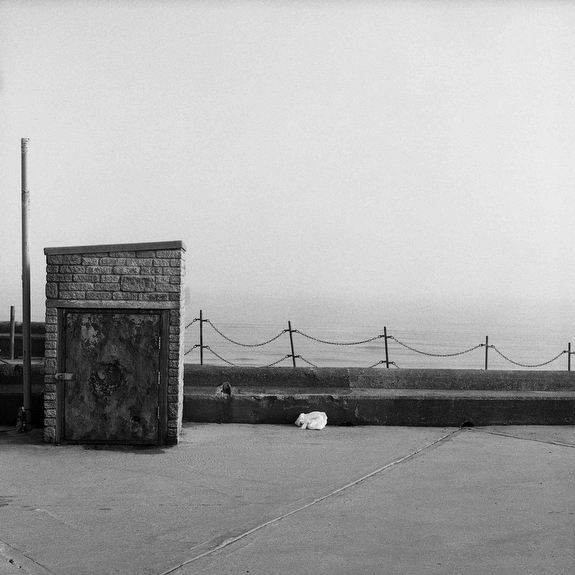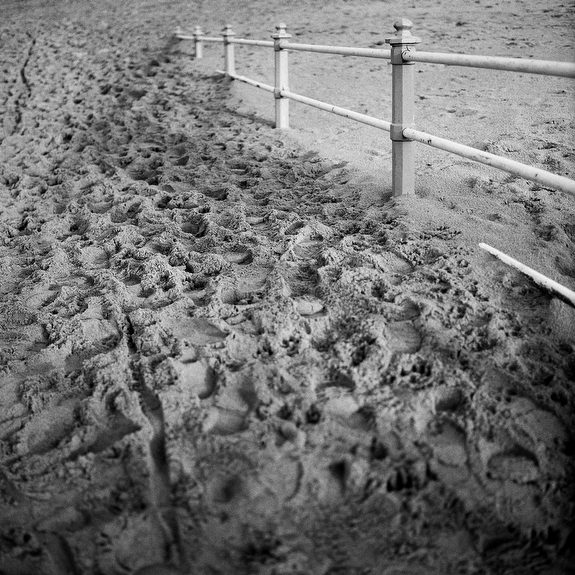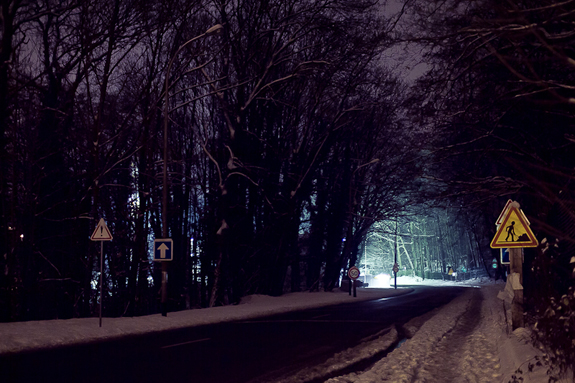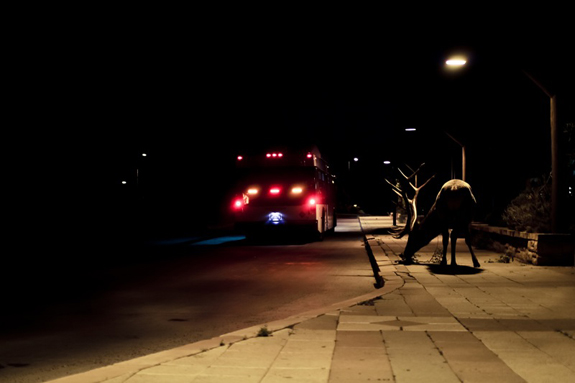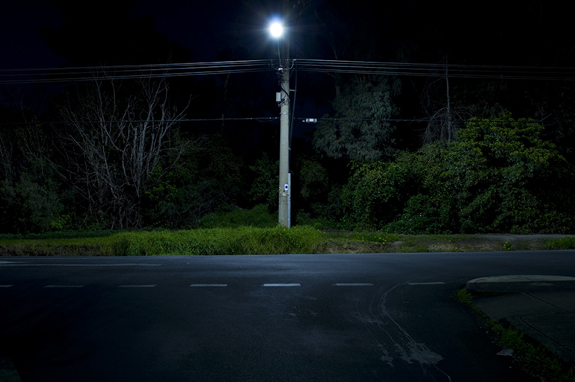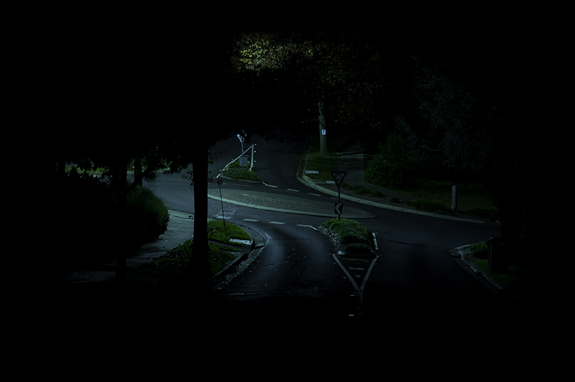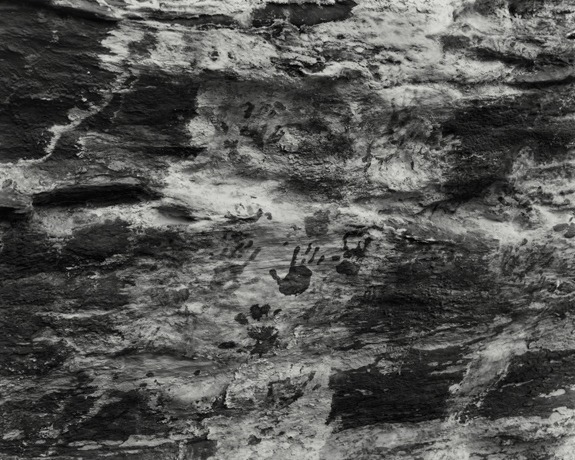
Autobiogeography investigates the temporal and interconnected makeup of both geography and personal experience.
Aboriginal Australians used toas, typically made of wood and gypsum, as sign posts to mark the direction of departure from a campsite so that others could follow. My 8×10 contact prints present found marks as toas, suggesting that place is itself temporally layered, a palimpsest of the multiple traces left by individuals and groups. These impressions are sometimes literally embedded within the landscape, such as raccoon tracks in the earth and the evidence of human passage, or commemorate a natural event, including a boar’s passing and the death of an animal. Autobiography and geography converge and each image indicates a location of personal experience while offering an intertextual investigation of the landscape. The marks, whether literal or transient, reveal the land as a repository of historical memory, of traces of a past and their complex connections to other places and peoples. Autobiogeography infers from the land a sense of dynamic interaction that spans from pre-historic times into the present. Each print, a toas itself, unfolds the personal psyche and connection that we all have to the world around us.
— Allison Barnes, Savannah, Georgia, USA

